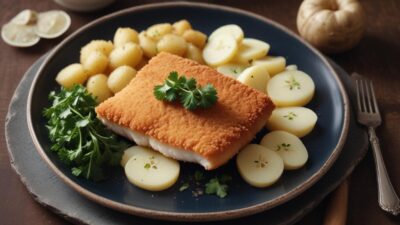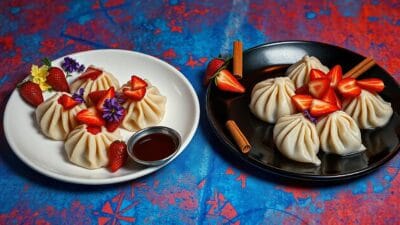Contents
Traveling through India offers a chance to enjoy some of the world’s most flavorful and diverse cuisines. From street-side snacks to rich regional dishes, food is a major part of the experience. However, it’s important to take a few precautions to avoid foodborne illness while exploring the country’s culinary treasures.
The most important rule? Stick to hot, freshly cooked food and avoid tap water in any form—including ice cubes, salads, and fruits that may have been rinsed with it. Choosing sealed bottled water and skipping raw or uncovered foods greatly lowers the risk of stomach troubles.
Travelers should be cautious with street food, especially if it’s sitting out or handled without proper hygiene. Fruits that can be peeled are usually a safer bet. By following a few simple tips, visitors can enjoy the richness of Indian cuisine with confidence and comfort.
🍛 General Food Safety Tips in India

Eating safely in India is all about smart choices—where you eat, what you eat, and how it’s prepared. By staying aware and maintaining good hygiene, travelers can enjoy delicious meals while avoiding common stomach issues.
✅ Choosing Safe Restaurants and Street Food Vendors
When picking a place to eat, follow the locals. Busy restaurants or food stalls with high customer turnover are more likely to serve fresh, safe meals. Cleanliness is key—look for vendors who use gloves, cover their food, and cook in front of you.
Street food can be one of the highlights of Indian cuisine, but choose wisely. Avoid vendors with dirty hands, reused oil, or food that’s been sitting out uncovered. Opt for food that is freshly cooked and piping hot.
💡 Smart Eating Habits
- Skip raw salads and cut fruit that may have been washed in tap water.
- Prefer fruits you can peel, like bananas or oranges.
- Avoid dairy products that haven’t been refrigerated or are served from open containers.
- Stick with packaged snacks and factory-sealed drinks when traveling or on the go.
Being cautious doesn’t mean missing out—it just means enjoying the vibrant flavors of India with peace of mind.
💧 Drinking Water Precautions

In India, tap water is not safe to drink—even for brushing teeth or rinsing food. Staying hydrated is important, but the key is sticking to clean, sealed sources:
- Always choose bottled water from trusted brands. Make sure the cap is sealed before opening.
- Avoid ice in drinks unless you’re sure it’s made from purified water.
- Boiled water or freshly brewed hot drinks like tea are safer alternatives.
- If bottled water isn’t available, use a portable water purifier, filter, or purification tablets. These are especially useful for rural areas or treks.
Even seemingly safe places can have water issues, so being careful every time helps reduce the risk of waterborne illness.
✋ Hygiene and Handwashing Best Practices
Keeping hands clean is one of the most effective ways to prevent illness while traveling:
- Wash hands with soap and clean water before meals and after using the bathroom.
- If soap and water aren’t available, use hand sanitizer with at least 60% alcohol.
- Avoid touching your mouth, nose, or eyes with unwashed hands, especially after handling money or using public transport.
- Carry a small hygiene kit with sanitizer, tissues, and wet wipes for convenience.
These small habits can make a big difference in staying healthy while enjoying India’s amazing food and culture.
🍛 What to Eat and What to Avoid in India

Eating well in India doesn’t mean taking big risks—it means being smart about your choices. Stick to freshly cooked meals, avoid anything raw or pre-cut, and pay attention to where locals eat.
✅ Safe and Recommended Local Dishes
Look for foods that are cooked hot, served fresh, and come from busy, clean places. Here are some good options:
- Chana Masala – A flavorful chickpea curry that’s thoroughly cooked and full of protein.
- Dal (Lentil Soup) – High in fiber and protein, this dish is boiled and safe to eat almost anywhere it’s freshly made.
- Tandoori Chicken – Roasted at high heat in a clay oven, which kills harmful bacteria.
- Steamed Rice & Roti (Flatbread) – Simple, filling staples that are usually safe when made in clean settings.
- Vegetable Curries – Opt for versions that are hot and bubbling, not ones sitting in open trays.
- Kheer (Rice Pudding) – A sweet dish made with milk that’s boiled, making it a safer dessert—just buy it from reputable places.
If you want to try street food, choose vendors who:
- Cook food in front of you
- Serve it piping hot
- Are popular with locals (a good sign of freshness and trust)
⚠️ Foods to Avoid
To prevent stomach issues, it’s smart to steer clear of:
- Raw salads or fruits that may be washed in tap water
- Pre-cut fruit sold in open-air markets
- Cold dairy products or milk-based drinks that haven’t been boiled
- Ice cubes or drinks made with unfiltered water
- Buffet-style meals where food sits out for long periods
- Uncovered sweets exposed to flies or dust
⚠️ High-Risk Foods and Ingredients to Avoid in India

To stay healthy during your travels, it’s best to avoid foods and ingredients that are most likely to carry bacteria or be exposed to unsafe water:
🚫 What to Skip:
- Tap Water – Don’t drink it, use it for brushing teeth, or accept drinks made with it.
- Ice Cubes – Often made with unfiltered tap water. Say no to ice in juices, sodas, or cocktails.
- Raw or Unpeeled Produce – Includes:
- Salads
- Unwashed herbs
- Fruits with edible peels (like apples or grapes)
Only eat raw produce if you’ve peeled or washed it yourself with bottled water.
- Undercooked or Cold Meats – Always choose meats that are freshly cooked and served hot.
- Street Dairy Products – Avoid milk, yogurt, or paneer unless you trust the hygiene and it’s served hot or pasteurized.
✅ Safer Snack Choices for Travelers
Snacking in India can still be delicious and safe—just keep it clean and cooked.
🥜 Smart Packaged Snacks:
- Sealed items from reputable brands like Haldiram’s, Lay’s, or Britannia
- Nuts and seeds (pre-roasted or sealed packs)
- Roasted chickpeas (chana) or spiced lentils
🍵 Safer On-the-Go Sips:
- Hot Chai or Coffee – Boiled water = safer drink.
- Fresh fruit juice – Only if you see it made with bottled water and clean tools.
🍛 Safer Street Snacks:
- Choose vendors who:
- Cook fresh and hot
- Serve right off the pan
- Keep ingredients covered
- Good picks:
- Samosas
- Pakoras (fritters)
- Idli or Dosa from popular, clean stalls
🥗 Handling Special Dietary Needs in India

India offers a wide variety of food, but travelers with special diets should stay alert to avoid hidden ingredients and cross-contamination.
🌿 Vegetarian & Vegan Travelers
Good news: Vegetarian food is very common in India—about 40% of the population is vegetarian.
✅ What’s Safe:
- Dals (lentil soups)
- Rice dishes
- Vegetable curries
- Fresh fruits and salads (washed with safe water)
⚠️ Vegan Watchouts:
- Many vegetarian meals include:
- Ghee (clarified butter)
- Paneer (cheese)
- Curd (yogurt)
Always ask if the dish has any dairy or eggs.
Phrase to use:
“No dairy, no eggs, no butter, please.”
🧾 Extra Tip:
- Some menus in big cities mark vegan items.
- In smaller towns, carry a translation card (digital or printed) explaining your dietary needs in Hindi or regional languages.
🌾 Gluten-Free & Allergy-Aware Eating

India has many naturally gluten-free dishes, but wheat is common in breads and some snacks.
✅ Gluten-Free Staples:
- Rice
- Lentils
- Vegetables
- Poha (flattened rice)
- Idli and Dosa (if made with only rice and urad dal batter)
⚠️ Gluten Risks:
- Chapati, naan, paratha – all contain wheat.
- Cross-contamination – common in shared frying oil or thali platters.
⚠️ Food Allergy Advice:
- Peanuts, cashews, and dairy are often used in:
- Gravies
- Desserts
- Spice mixes
Ask for ingredient details before ordering.
Helpful Tip: Use a card or app to clearly explain allergies. Many cooks are accommodating but need clear communication.
🏷️ Food Label Reading Tips in India

Reading food labels in India can be tricky, especially for travelers with allergies or dietary restrictions. Labels are often in English and local languages, but not always complete.
🔍 Key Ingredients to Watch For
| Allergen / Ingredient | Look for These Words on Labels |
|---|---|
| Dairy | Milk, Ghee, Paneer, Yogurt, Butter |
| Gluten | Wheat, Maida (refined flour), Atta (whole wheat) |
| Nuts & Soy | Almond, Cashew, Groundnut (Peanut), Soy |
🛑 Allergen warnings may not be shown clearly. If you’re unsure—don’t risk it.
✅ Safe Practices
- Choose fresh, whole foods over packaged snacks when possible.
- Avoid products with unclear or no labeling.
- When buying local brands, stick to reputed or export-level packaging for better labeling quality.
🗣️ Use a Translation Card
💡 Carry a food allergy translation card in Hindi or regional languages to quickly explain:
“I am allergic to milk/gluten/nuts. Does this food contain any of these?”
This is especially helpful in local restaurants, markets, or when buying unpackaged foods.
🧊 Bonus Reminder
Even labeled drinks can have ice made with tap water. Always ask for:
- No ice
- Bottled water with sealed cap
- Avoid raw salads unless you washed them yourself




